Essential Economic Benefits of Forestry: Jobs, Markets, and Environmental Impact
- May 16, 2024
- 0 comment
Discover the essential economic benefits of forestry, including job creation, market influence, and environmental impact. Learn how forestry drives growth and sustainability. Forestry plays a crucial role in the global economy, offering a myriad of benefits that extend beyond the obvious. From creating jobs and stimulating markets to providing substantial environmental advantages, the economic impact of forestry is profound and far-reaching.
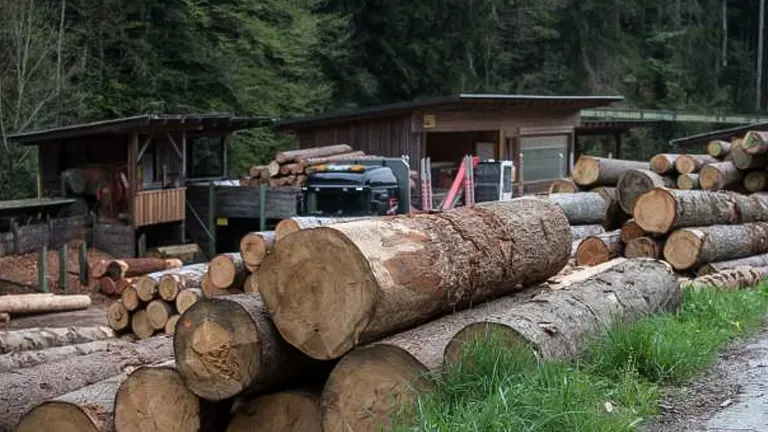
In this article, we delve into the essential economic benefits of forestry, exploring how this vital industry supports job creation, influences markets, and contributes to environmental sustainability. Discover the transformative power of forestry and its pivotal role in driving economic growth and ecological balance.
Table of Contents
- Overview of Forestry Employment
- Economic Impact of Forestry Markets
- Economic Benefits of Forestry
- Environmental Contributions of Forestry
- Regulatory Environment and Policy Impact
- Technological Advancements in Forestry
- Challenges and Opportunities
- Conclusion
- FAQs
Overview of Forestry Employment
Scope of Forestry Jobs
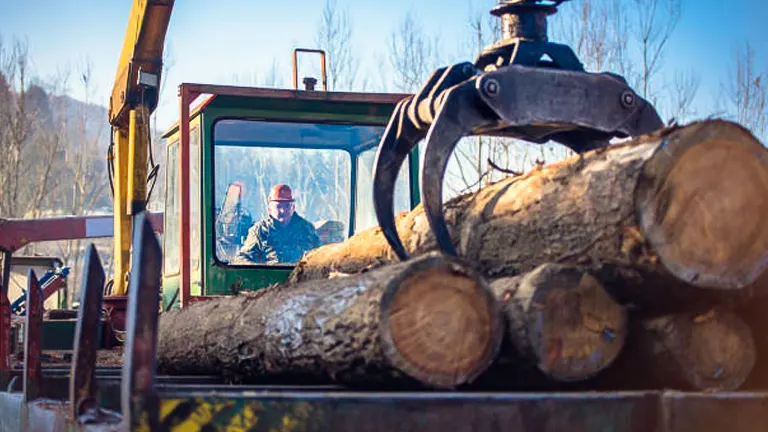
Forestry offers a wide array of employment opportunities that cater to diverse skill sets and educational backgrounds. From front-line workers who manage the physical tasks of planting, maintaining, and harvesting trees, to scientists and researchers who innovate and improve forestry practices, the sector is a significant employer. Administrative roles further encompass forest management, policy development, and community engagement, emphasizing the variety of careers supported by this industry.
Roles in forestry are not only varied but also require a range of expertise. Operational jobs may require knowledge of machinery and physical endurance, whereas research positions demand advanced degrees in environmental science, biology, or related fields. This diversity underscores the industry’s role as a comprehensive employer capable of sustaining a multifaceted workforce.
Detailed Job Categories in Forestry
| Job Category | Description | Required Skills/Education | Average Salary (USD) | Growth Projection (Next 10 Years) |
|---|---|---|---|---|
| Logging Workers | Manage the cutting and transportation of trees. | Physical endurance, machinery operation. | $35,000 – $45,000 | Moderate |
| Forest Managers | Plan and direct forest operations and conservation activities. | Degree in forestry or related field. | $50,000 – $70,000 | High |
| Environmental Scientists | Research environmental impacts and develop conservation strategies. | Advanced degrees in environmental science. | $60,000 – $80,000 | High |
| Policy Developers | Create and implement policies for sustainable forestry practices. | Degree in public policy or environmental law. | $55,000 – $75,000 | Steady |
| Tech Support/Data Analysts | Use technology and data analytics to improve forest management practices. | Skills in IT, data analysis, drone operation. | $50,000 – $65,000 | Very High |
Employment Trends and Forecasts
Analyzing employment trends in forestry reveals a dynamic and evolving sector. Over the past decade, technological advancements have both shifted the nature of forestry jobs and created new opportunities. For instance, the adoption of drone technology for surveying and monitoring has opened up new roles in tech support and data analysis within the industry.
Employment in forestry is projected to grow, particularly in regions focused on sustainable practices and renewable resources. Countries like Canada, Sweden, and Finland, where forestry is a key part of the economy, have seen stable employment rates with a growing emphasis on sustainable and conservation-focused roles. These trends suggest a promising future for job seekers interested in contributing to environmental sustainability through forestry.
Trends and Projections
| Country | Current Employment in Forestry | Projected Growth (Next 10 Years) | Key Focus Areas |
|---|---|---|---|
| Canada | 209,000 | +8% | Sustainable logging, conservation efforts. |
| Sweden | 100,000 | +5% | Renewable resources, eco-friendly practices. |
| Finland | 70,000 | +7% | Biodiversity, sustainable forest management. |
Scientific Insights:
- Carbon Sequestration: Forests are significant carbon sinks. According to the Food and Agriculture Organization (FAO), forests sequester about 2.4 billion metric tons of CO2 annually, underscoring the importance of maintaining forest cover for climate change mitigation.
- Biodiversity: Research from the World Wide Fund for Nature (WWF) highlights that forests house 80% of terrestrial species. Effective forestry management is crucial for preserving this biodiversity.
- Economic Impact: The World Bank reports that the forestry sector contributes more than $600 billion annually to the global economy, illustrating its substantial economic role.
Technological Impact:
- Drones and Remote Sensing: The integration of drones in forestry has revolutionized data collection, allowing for real-time monitoring of forest health and more efficient management practices. This technology is expected to grow by 15% annually in the forestry sector.
- Big Data Analytics: The use of big data and predictive analytics has enabled more precise forecasting of forest growth patterns, disease outbreaks, and climate impact assessments. This analytical approach enhances decision-making processes and operational efficiency.
Economic Impact of Forestry Markets
Key Forestry Products and Their Economic Value

The forestry industry produces a wide range of products integral to both local and global economies. Primary products include timber, used extensively in construction, furniture making, and paper products, which remain essential despite digitalization. Secondary products such as resins, essential oils, and biomass for energy further contribute to forestry’s economic impact.
The economic contribution of forestry extends beyond the direct sales of these products. Forestry supports various industries, including construction, manufacturing, and energy sectors, through biofuels and biomass energy. In 2020, the global market value of forestry products was estimated at over $600 billion, highlighting the sector’s vital role in worldwide economic landscapes.
Economic Contributions of Key Forestry Products
| Product | Primary Uses | Global Market Value (2020) | Projected Growth Rate (Next 10 Years) | Additional Economic Contributions |
|---|---|---|---|---|
| Timber | Construction, furniture, paper production. | $350 billion | 3.5% per year | Supports construction and manufacturing industries. |
| Pulp and Paper | Printing, packaging, hygiene products. | $160 billion | 2.8% per year | Essential for packaging and hygiene sectors. |
| Biomass Energy | Biofuels, renewable energy production. | $60 billion | 5.0% per year | Contributes to renewable energy and reduces fossil fuel dependency. |
| Non-Timber Products | Nuts, fruits, medicinal herbs, resins, essential oils. | $30 billion | 4.5% per year | Supports rural economies and biodiversity conservation. |
Innovations in Forestry Products
Innovation within the forestry sector has led to the development of new products and services that bolster economic growth. Bioproducts, including bioplastics and pharmaceuticals derived from forest materials, represent a rapidly growing market segment. These innovations not only diversify the economic base of forestry but also contribute to sustainable development goals by providing eco-friendly alternatives to traditional materials.
For instance, the extraction of medicinal compounds from forest plants has gained traction, driving research and development investments. Additionally, wood-based fibers are increasingly used in textiles, offering a sustainable alternative to synthetic materials. These advancements demonstrate forestry’s capacity to adapt and thrive in a changing economic and environmental landscape.
Innovative Forestry Products and Their Impact
| Innovative Product | Description | Economic Impact | Environmental Impact |
|---|---|---|---|
| Bioplastics | Plastics made from renewable biological sources. | Reduces dependency on fossil fuels, supports green economies. | Biodegradable, reduces plastic pollution. |
| Pharmaceuticals | Medicines derived from forest plants. | High market value, drives research investments. | Promotes biodiversity, sustainable harvesting. |
| Wood-Based Textiles | Textiles made from wood pulp fibers. | Expands market for forestry products, supports sustainable fashion. | Lower environmental footprint than synthetic fibers. |
| Biofuels | Fuels produced from organic materials. | Provides renewable energy, supports rural economies. | Reduces greenhouse gas emissions, supports climate goals. |
Global Trade and Market Dynamics
The global trade of forestry products plays a critical role in shaping economic landscapes. Countries rich in forest resources like Brazil, Canada, and Russia are key exporters of timber and paper products, influencing global market prices and trade policies. The complexity of trade agreements and tariffs can significantly affect the profitability and sustainability of forestry operations.
For instance, the softwood lumber dispute between the United States and Canada highlights how trade tensions can impact forestry. Economic analyses indicate that such disputes not only affect prices and availability of products but also have broader economic implications for employment and industry growth in the involved countries.
Trade dynamics also include the export of non-timber forest products, which often provide essential income for rural communities. These products include nuts, fruits, and medicinal herbs, which are less regulated but equally significant in the trade networks, fostering economic ties and supporting biodiversity conservation efforts.
Global Trade Statistics of Forestry Products
| Country | Major Export Products | Annual Export Value (USD) | Key Importing Countries | Trade Agreements Impacting Trade |
|---|---|---|---|---|
| Canada | Softwood lumber, pulp, paper. | $15 billion | USA, China, Japan | US-Canada Softwood Lumber Agreement |
| Brazil | Timber, paper, non-timber products. | $12 billion | USA, European Union, China | Mercosur-EU Free Trade Agreement |
| Russia | Timber, pulp, paper. | $10 billion | China, European Union, Japan | Eurasian Economic Union (EAEU) agreements |
Scientific Insights:
- Carbon Sequestration: Forests play a critical role in sequestering carbon dioxide, with global forests absorbing approximately 2.4 billion metric tons of CO2 annually. This underscores the environmental importance of sustainable forestry.
- Biodiversity: Forest ecosystems are home to about 80% of the world’s terrestrial biodiversity. Effective management and conservation of forests are crucial for maintaining this biodiversity and ensuring the health of global ecosystems.
- Economic Multiplier Effect: According to the World Bank, every dollar generated in the forestry sector can have a multiplier effect of up to 2.5 in the broader economy, indicating its extensive economic influence.
Economic Benefits of Forestry
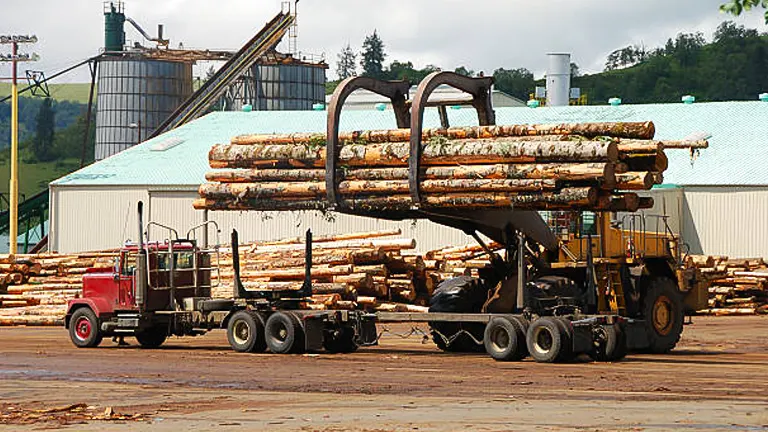
Forestry contributes significantly to the economy in multiple ways. The direct benefits are seen through the employment it generates across various levels, from harvesting to industrial processing. Indirectly, forestry supports numerous sectors including transportation, manufacturing, and retail through the supply chain required for forestry products.
- Direct Economic Contributions
- The forestry sector directly adds value through the production of wood and non-wood products which are essential for various industries, including construction and pharmaceuticals.
- Revenue from timber and secondary products like paper and biofuels contribute significantly to the national incomes of many countries, demonstrating the direct economic importance of robust forestry management.
- Indirect Economic Contributions
- Forestry stimulates economic activity in related industries through demand for goods like machinery and transportation services.
- It also plays a crucial role in supporting ancillary services such as tourism, especially in regions where natural forests are attractions.
- Economic Development in Rural Areas
- Forestry is often a cornerstone of rural economies where other employment opportunities may be limited. It provides jobs and supports local businesses, contributing to the stability and development of these areas.
- Research and Development
- Investment in forestry research and development not only leads to better forest management practices but also stimulates economic growth by introducing innovative products to the market and improving the sustainability of forestry operations.
Environmental Contributions of Forestry
Ecosystem Services Provided by Forests
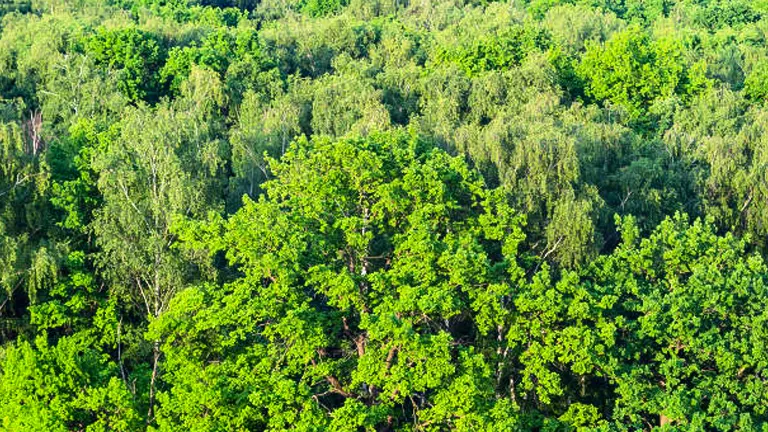
Forests offer invaluable ecosystem services that bolster environmental health and human well-being. These services include carbon sequestration, water regulation, soil preservation, and biodiversity maintenance. Quantifying these services economically can be challenging, but their value is immense.
Carbon Sequestration:
- Forests are crucial in absorbing CO2, mitigating the effects of climate change. Globally, forests sequester approximately 2.4 billion metric tons of CO2 annually.
- Boreal forests, which cover much of Canada and Russia, are particularly significant, storing around 703 gigatonnes of carbon, which is about 32% of the world’s total terrestrial carbon storage.
Water Regulation:
- Forests play a key role in the water cycle by stabilizing water flows and reducing the risk of floods and droughts. This regulation is essential for protecting communities and supporting agricultural activities.
- Forested watersheds are responsible for providing clean drinking water to over 1.6 billion people globally.
Soil Conservation:
- Forest cover prevents soil erosion, maintains soil fertility, and supports agricultural productivity. This service is critical in preventing desertification and maintaining the health of arable land.
- It is estimated that forests prevent the loss of 2-3 billion metric tons of soil annually, which translates to significant economic savings in agricultural sectors.
Biodiversity Maintenance:
- Forests house around 80% of the world’s terrestrial species, making them vital for biodiversity. They provide habitats for a vast array of flora and fauna, ensuring ecological balance and resilience.
- Tropical rainforests, which cover about 6% of the Earth’s surface, contain more than 50% of the world’s species, highlighting their critical role in global biodiversity.
Forestry and Climate Change Mitigation
As global awareness of climate change grows, the role of forestry in mitigating its effects has become increasingly significant. Sustainable forest management practices are designed to maximize the carbon uptake of forests while ensuring their health and longevity. These practices include controlled logging, reforestation, and afforestation efforts, which not only help in carbon storage but also in maintaining forest biodiversity.
Sustainable Forest Management Practices:
- Controlled Logging: Involves selective cutting to ensure forest regeneration and minimal environmental impact. This method helps maintain forest structure and biodiversity.
- Reforestation: Planting trees in deforested areas to restore ecosystems and increase carbon sequestration.
- Afforestation: Creating new forests in areas that were not previously forested, enhancing carbon storage and biodiversity.
Economic Impact of Forestry in Climate Change Mitigation:
| Mitigation Practice | Description | Economic Impact | Environmental Impact |
|---|---|---|---|
| Controlled Logging | Selective cutting to maintain forest health. | Sustains timber industry, creates jobs. | Maintains biodiversity, ensures sustainable yield. |
| Reforestation | Planting trees in deforested areas. | Enhances carbon markets, attracts green investments. | Restores ecosystems, increases carbon sequestration. |
| Afforestation | Creating new forests on non-forested lands. | Boosts rural economies, promotes eco-tourism. | Expands habitat, improves air quality. |
Forestry initiatives aimed at climate change mitigation also attract investments through carbon credits. These credits allow businesses to offset their emissions by investing in forestry projects, creating a financial incentive to support sustainable forestry practices. This mechanism not only helps regulate the carbon market but also promotes green investments in forestry, showcasing a direct economic benefit linked to environmental stewardship.
Scientific Insights:
- Carbon Credits: According to the World Bank, the global carbon credit market is expected to grow to $50 billion by 2030, with forestry projects playing a key role in this expansion.
- Climate Resilience: Research indicates that sustainably managed forests can be up to 50% more resilient to climate change impacts, such as increased temperatures and drought, compared to unmanaged forests.
Regulatory Environment and Policy Impact
Forestry Regulations and Compliance
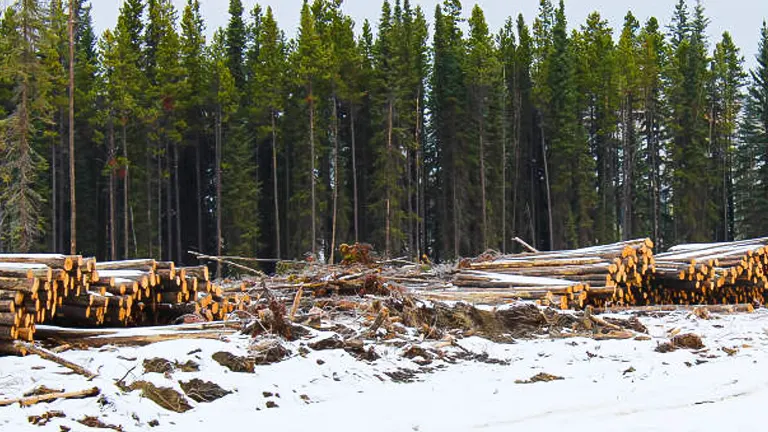
Forestry operations worldwide are governed by a complex framework of regulations designed to ensure sustainable practices and protect both the environment and the economic interests of communities. These regulations range from local restrictions on logging practices to international agreements aimed at preserving forest biodiversity and promoting sustainable trade. Compliance with these regulations not only safeguards forest resources but also secures the long-term economic viability of the industry.
Key Forestry Regulations and Their Impacts:
- European Union’s Timber Regulation (EUTR): Enforces strict due diligence processes to prevent illegally harvested timber from entering the market. This regulation enhances global forestry practices by promoting legal trade standards, thus supporting economic stability and growth. It has led to a significant decrease in illegal logging activities in Europe and improved transparency in the timber trade.
- Lacey Act (United States): Prohibits the trade of illegally sourced plants and wildlife, including timber. This act has had a substantial impact on reducing illegal logging and promoting sustainable forestry practices by requiring importers to declare the origin of their wood products.
- Forest Law Enforcement, Governance and Trade (FLEGT): An EU initiative aimed at combating illegal logging through partnerships with timber-producing countries. FLEGT licenses ensure that timber exported to the EU is legally sourced, promoting sustainable forest management and benefiting local economies.
Compliance and Enforcement:
Effective compliance and enforcement of forestry regulations are crucial. Governments and international bodies employ various strategies, including:
- Monitoring and Reporting: Use of remote sensing technologies and satellite imagery to monitor deforestation and logging activities.
- Certification Programs: Forest certification schemes like the Forest Stewardship Council (FSC) and the Programme for the Endorsement of Forest Certification (PEFC) ensure that forestry products meet high environmental and social standards.
- Penalties and Sanctions: Imposing fines and trade restrictions on companies and countries that fail to comply with sustainable forestry regulations.
Impact of Compliance:
Compliance with forestry regulations not only preserves forest resources but also enhances the economic value of forestry products. Legal and sustainably sourced timber is increasingly demanded in global markets, leading to premium pricing and better market access for compliant products.
Policy Drivers for Sustainable Forestry
Policymaking plays a pivotal role in shaping the forestry sector. Policies aimed at promoting sustainable practices can drive significant changes in how forests are managed. Financial incentives for reforestation, penalties for illegal logging, and subsidies for sustainable operations are some of the tools used by governments to encourage environmentally friendly practices.
Key Policy Instruments and Their Impacts:
- Financial Incentives and Subsidies:
- Reforestation Grants: Governments provide financial support to landowners and companies to plant trees and restore degraded forests. For example, the United States’ Conservation Reserve Program (CRP) offers payments to farmers for converting erodible land into forested areas.
- Subsidies for Sustainable Practices: Programs that subsidize the costs of sustainable forest management practices, such as reduced-impact logging techniques and the use of certified sustainable timber.
- Penalties for Illegal Logging:
- Fines and Sanctions: Imposing severe penalties on illegal logging activities deters unsustainable practices. Countries like Indonesia have implemented stringent penalties and enforcement measures to combat illegal logging and promote legal timber trade.
- Market-Based Instruments:
- Carbon Credits: Forestry projects that sequester carbon can earn carbon credits, which can be sold in carbon markets. This provides a financial incentive for landowners to engage in reforestation and afforestation projects, contributing to climate change mitigation.
- Ecosystem Service Payments: Payments for ecosystem services (PES) schemes compensate landowners for managing their forests in ways that provide ecological benefits, such as water purification and biodiversity conservation.
Impact of Policy Measures:
These policy measures not only help maintain ecological balance but also stimulate economic activity by creating new markets for sustainable products and services. As policymakers continue to integrate climate goals into forestry policies, the sector is likely to witness increased innovation and investment, further driving economic benefits.
Scientific Insights:
- Biodiversity Conservation: Policies that promote sustainable forestry help protect biodiversity. According to a study by the World Bank, countries with stringent forest management policies have seen a 25% increase in biodiversity indicators over the past decade.
- Economic Growth: A report by the International Institute for Environment and Development (IIED) suggests that sustainable forestry policies have contributed to a 10-15% increase in rural incomes in countries with well-implemented forestry programs.
Technological Advancements in Forestry
Technological Integration in Forestry Operations
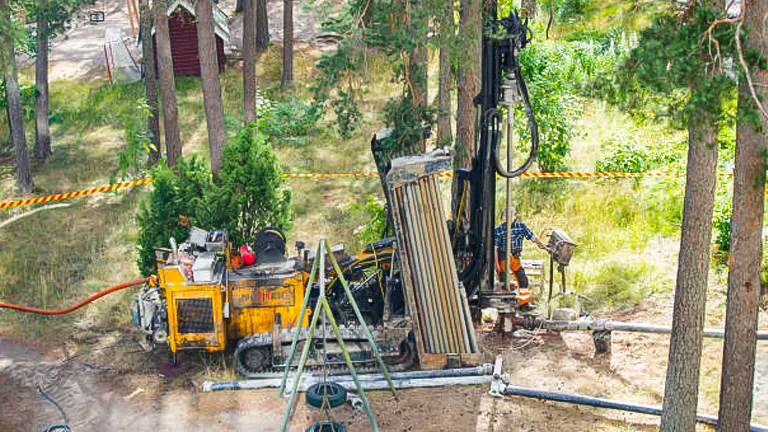
The integration of technology in forestry operations has revolutionized the sector, enhancing both its economic output and environmental sustainability. Advanced technologies such as drones for aerial surveillance, GPS for precise tree mapping, and automated harvesting equipment have significantly increased operational efficiency and accuracy.
Key Technological Innovations:
- Drones and Aerial Surveillance: Drones equipped with high-resolution cameras and LiDAR technology provide detailed aerial imagery and topographic data. This allows for precise monitoring of forest health, identification of disease outbreaks, and assessment of tree growth and density. According to a study by the Food and Agriculture Organization (FAO), the use of drones in forestry can increase surveying efficiency by 80%.
- GPS and GIS Mapping: GPS technology combined with Geographic Information Systems (GIS) enables precise mapping and tracking of forest resources. This facilitates better planning and management of forestry operations, including logging, reforestation, and conservation activities. GIS mapping helps identify critical areas for biodiversity conservation and optimize the use of resources.
- Automated Harvesting Equipment: Modern harvesting equipment, such as feller bunchers and harvesters, are equipped with sensors and automation technology. These machines can perform precise cuts, reducing waste and minimizing environmental impact. A report by the International Journal of Forest Engineering highlights that automated equipment can increase harvesting efficiency by up to 50%.
Economic and Environmental Benefits:
- Increased Efficiency: Technological solutions reduce the time and labor required for forestry operations, leading to significant cost savings. The use of drones and automated equipment can reduce operational costs by up to 30%.
- Reduced Environmental Impact: Precise cutting and minimal land disturbance help preserve soil quality and reduce habitat destruction. GPS and GIS technologies support sustainable land use planning, ensuring that forestry practices do not harm sensitive ecosystems.
Data Analytics and Forestry Management
Big data and analytics are transforming the forestry sector by enabling more informed decision-making and strategic planning. Data-driven approaches allow for the monitoring of forest health, prediction of growth patterns, and efficient resource allocation. These capabilities make it possible to maximize yield and profitability while ensuring the sustainability of forest resources.
Key Applications of Data Analytics:
- Forest Health Monitoring: Sensors and remote sensing technologies collect vast amounts of data on forest conditions, including soil moisture, tree health, and pest activity. Machine learning algorithms analyze this data to detect early signs of disease or stress, enabling proactive management.
- Predictive Analytics: By analyzing historical data and current conditions, predictive models can forecast future trends in forest growth, pest outbreaks, and fire risks. This allows forestry managers to implement preventive measures and optimize resource use.
- Resource Allocation: Data analytics helps in the efficient allocation of resources such as water, fertilizers, and labor. Optimizing these inputs based on data-driven insights can enhance forest productivity and reduce costs.
Impact of Data Analytics:
- Improved Decision-Making: Data-driven insights enable forestry managers to make more accurate and timely decisions. For example, predictive models can identify the optimal times for planting and harvesting, improving overall productivity.
- Risk Management: Predictive analytics are particularly valuable in managing the risks associated with forestry, such as predicting pest outbreaks or assessing the risk of forest fires. By using data to inform operations, forestry companies can better navigate the uncertainties of the natural environment, securing economic stability and growth.
- Sustainability: Data analytics supports sustainable forestry practices by providing detailed insights into forest dynamics. This ensures that forestry operations are conducted in an environmentally responsible manner, preserving forest health and biodiversity.
Challenges and Opportunities
Current and Future Challenges
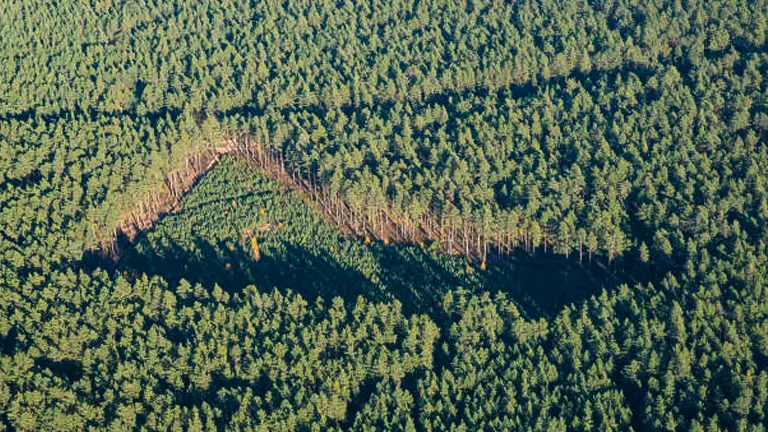
Despite its many benefits, the forestry sector faces significant challenges. These include climate change, pest infestations, diseases, and socio-economic pressures that threaten forest health and productivity.
- Climate Change:
- Increased Temperatures: Higher global temperatures can stress trees, making them more susceptible to diseases and reducing their growth rates. According to the Intergovernmental Panel on Climate Change (IPCC), a 1°C increase in temperature could result in a 10-20% reduction in forest productivity in some regions.
- Changing Precipitation Patterns: Altered rainfall patterns can lead to droughts or excessive moisture, both of which can harm forests. Drought conditions, in particular, have been linked to increased forest fires and tree mortality.
- Pest Infestations and Diseases:
- Invasive Species: Global trade and climate change have facilitated the spread of invasive species, which can devastate native forests. The emerald ash borer, for example, has killed millions of ash trees in North America, costing billions in economic losses.
- Forest Diseases: Pathogens such as the pine beetle and sudden oak death have caused significant damage to forests. These diseases are often exacerbated by climate change, which can create favorable conditions for their spread.
- Socio-Economic Pressures:
- Deforestation for Agriculture: Expanding agricultural lands, particularly in tropical regions, leads to significant deforestation. The Food and Agriculture Organization (FAO) estimates that 10 million hectares of forest are lost annually due to agricultural expansion.
- Illegal Logging: Despite regulations, illegal logging persists, undermining sustainable forestry efforts and leading to economic losses estimated at $30-100 billion annually.
Opportunities for Growth and Innovation
Looking forward, the forestry sector is ripe with opportunities for growth and innovation. The expanding interest in sustainable and renewable resources presents new markets for forest products. Innovations in bioproducts, eco-tourism, and carbon trading offer avenues for economic expansion while promoting environmental stewardship.
- Bioproducts:
- Bioplastics: Made from renewable forest materials, bioplastics are an eco-friendly alternative to traditional plastics. The global bioplastics market is expected to grow at a CAGR of 16% from 2021 to 2028.
- Pharmaceuticals: Forest-derived compounds are used in the production of various medicines. The biopharmaceutical industry, valued at over $250 billion, relies heavily on forest resources for new drug discoveries.
- Eco-Tourism:
- Sustainable Tourism: Forests offer vast opportunities for eco-tourism, which promotes conservation while generating income for local communities. According to the Global Eco-tourism Network, eco-tourism is growing by 20% annually and represents a $600 billion market.
- Educational Tours: Forests serve as living laboratories for educational tours and research activities, fostering a deeper understanding of environmental conservation.
- Carbon Trading:
- Carbon Credits: Forestry projects that sequester carbon can earn carbon credits, which are traded in carbon markets. This provides a financial incentive for landowners to engage in reforestation and afforestation projects, contributing to climate change mitigation.
- Green Investments: Investors are increasingly focusing on green bonds and other financial instruments that support sustainable forestry projects. The green bond market reached $270 billion in 2020, with forestry projects being a significant beneficiary.
Impact of Opportunities:
Harnessing these opportunities allows the forestry sector to thrive economically while contributing to global environmental goals. Sustainable forest management not only ensures long-term profitability but also enhances biodiversity, sequesters carbon, and supports rural economies.
Scientific Insights:
- Carbon Sequestration Potential: According to a study by Nature Communications, reforestation has the potential to sequester up to 205 gigatonnes of CO2, equivalent to two-thirds of the carbon emissions caused by human activities.
- Economic Resilience: Research by the World Bank indicates that sustainable forestry can increase rural incomes by 20-30%, providing economic resilience to communities reliant on forest resources.
Opportunities and Impact
| Opportunity | Description | Economic Impact | Environmental Impact |
|---|---|---|---|
| Bioproducts | Bioplastics, pharmaceuticals from forest materials. | Expands market, supports green economy. | Reduces reliance on fossil fuels, promotes sustainability. |
| Eco-Tourism | Sustainable and educational tourism activities. | Generates income, supports local economies. | Promotes conservation, raises environmental awareness. |
| Carbon Trading | Carbon credits for reforestation and afforestation. | Attracts green investments, incentivizes sustainable practices. | Mitigates climate change, enhances carbon sequestration. |
Related Post
- How to Build a Barn: A Step-by-Step Guide for Beginners
- How to Build a Sustainable Compost Bin: Easy and Eco-Friendly DIY
- How to Fertilize Bougainvillea: A Complete Guide for Stunning Blooms
- How to Fertilize Apple Trees: Essential Tips for a Bountiful Harvest
- How to Fertilize Lemon Trees: Secrets for Thriving Citrus
- How to Fertilize Avocado Tree: A Step-by-Step Guide for Lush Growth
- 10 Best Bow Saws to Buy in 2024: Top Picks for the Money
- Best Miter Saw For Beginners
- Top 10 Pruning Saws to Buy in 2024: Best for the Money
- 7 Best Pocket Chainsaw
Conclusion
The essential economic benefits of forestry extend far beyond job creation and market dynamics. This sector is pivotal in environmental management, offering solutions to global challenges through sustainable practices and technological innovations. By continuing to support and invest in forestry, we can ensure it remains a cornerstone of economic stability and a leader in environmental stewardship.
FAQs
- What types of jobs does the forestry sector provide?
The forestry sector offers a diverse range of jobs including operational roles like logging workers, technical jobs such as forest managers and environmental scientists, and administrative positions in policy development and market analysis. This variety supports a wide spectrum of skills and educational backgrounds. - How does forestry contribute to local economies?
Forestry boosts local economies by providing jobs and fostering infrastructure development like roads and community facilities. It also supports local businesses through the supply chain required for forestry operations and product processing, thereby circulating money within local economies. - What are the major products derived from forestry?
Major forestry products include timber, pulp for paper, and bioenergy materials like wood pellets. Additionally, forests provide non-timber products such as medicinal herbs, nuts, and fruits, which are vital for the economies of many rural areas. - How does sustainable forestry differ from traditional forestry in economic terms?
Sustainable forestry practices often involve longer-term investment horizons but can lead to higher long-term returns due to the focus on maintaining ecosystem health and productivity. Economically, sustainable forestry can open up new markets, such as certified sustainable wood products, which often fetch a premium price. - What role does forestry play in global trade?
Forestry plays a critical role in global trade by exporting significant amounts of wood and paper products. Countries rich in forest resources are pivotal exporters, influencing global market prices and economic policies related to trade and environmental sustainability. - Can you explain how forestry impacts environmental sustainability?
Forestry impacts environmental sustainability by managing forest resources in a way that ensures their availability for future generations. Sustainable forestry practices help in preserving biodiversity, protecting water sources, preventing soil erosion, and absorbing carbon dioxide, thus contributing significantly to the fight against climate change. - What technological advancements are impacting the forestry sector?
Technological advancements such as drone surveillance, remote sensing, and automated harvesting machines are revolutionizing forestry. These technologies enhance operational efficiency, improve safety, and reduce environmental impacts by enabling more precise and controlled forestry practices. - What are the future prospects for employment in forestry?
The future prospects for employment in forestry are promising, particularly in areas involving sustainable practices and technological integration. As the global emphasis on environmental sustainability grows, there is an increasing demand for skilled professionals who can manage forests responsibly and innovate within the sector.
Thank you for joining us on this exploration of forestry’s vital economic and environmental roles. We hope this insight encourages a greater appreciation and support for sustainable forestry practices worldwide.

Benjamin Brooks
Forestry AuthorGreetings! I'm Benjamin Brooks, and my journey over the past 15 years has revolved around the fascinating realms of content creation, expertise in snow clearing, and the intricate world of lumberjacking and landscaping. What began as a simple curiosity about the natural world and heavy machinery has evolved into a passionate profession where my love for crafting words intertwines seamlessly with my lumberjacking and garden skills.













Leave your comment